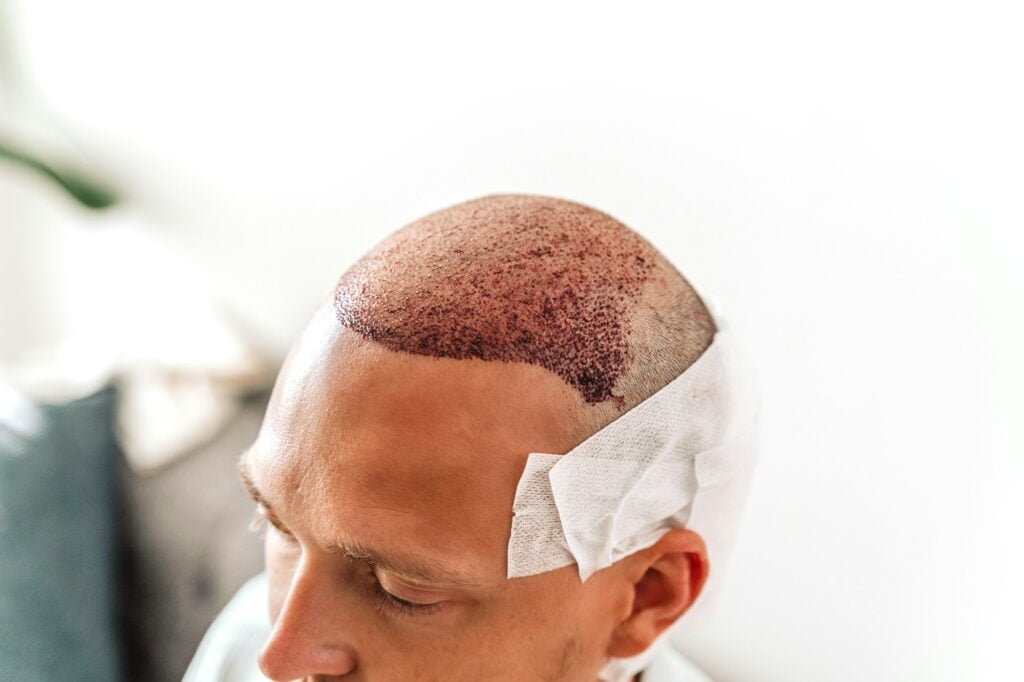Painless hair transplantation aims to enhance the comfort and overall experience for patients undergoing hair restoration procedures. Advances in medical technology and anesthesia techniques have significantly reduced discomfort during and after hair transplants. This approach not only improves patient satisfaction but also facilitates quicker recovery.
Key Features of Painless Hair Transplantation:
- Advanced Anesthesia Techniques: Utilization of local anesthesia and needle-free methods to minimize pain.
- Modern Tools and Techniques: Use of devices like micromotors and Choi implanter pens for precise and less invasive procedures.
- Patient Comfort: Focus on creating a stress-free and comfortable environment during the procedure.
Anesthesia Techniques:
1. Local Anesthesia:
- Administered to numb the scalp before the procedure.
- Ensures that the patient feels no pain during the extraction and implantation of hair follicles.
2. Needle-Free Anesthesia:
- Jet Injector Devices: These devices use high pressure to deliver anesthesia without the need for needles, reducing discomfort and anxiety associated with needle injections.
- Topical Anesthetics: Applied to the scalp to numb the area before local anesthesia is administered.
3. Sedation:
- Mild Sedation: Used to relax the patient while keeping them conscious. This can be administered intravenously.
- Oral Sedation: Pills taken before the procedure to help the patient relax.
Techniques in Painless Hair Transplantation:
1. Follicular Unit Extraction (FUE):
- Process: Individual hair follicles are extracted from the donor area using a micro-punch tool and then implanted into the recipient area.
- Advantages: Minimally invasive, leaves tiny puncture scars that are barely noticeable, and has a quicker recovery time.
2. Direct Hair Implantation (DHI):
- Process: Similar to FUE, but uses a Choi implanter pen to implant hair follicles directly into the scalp.
- Advantages: Allows for more precise placement of hair follicles, leading to a more natural-looking result and minimal trauma to the scalp.
Advantages of Painless Hair Transplantation:
- Minimal Discomfort: Advanced anesthesia techniques ensure the procedure is virtually pain-free.
- Quicker Recovery: Less invasive methods lead to faster healing times and reduced post-operative pain.
- Improved Patient Experience: Reduces anxiety and stress, making the procedure more comfortable for patients.
- High Success Rate: Precise techniques enhance the success rate and natural appearance of the transplanted hair.
Post-Procedure Care and Recovery:
- Minimal Pain Management:
- Over-the-counter pain relievers are usually sufficient to manage any post-operative discomfort.
- Patients are often surprised by the lack of significant pain after the procedure.
- Reduced Swelling and Redness:
- Following the surgeon’s aftercare instructions helps minimize swelling and redness.
- Applying cold compresses as recommended can also help.
- Rapid Return to Normal Activities:
- Most patients can return to their daily activities within a few days.
- Strenuous activities and exercise are typically avoided for a week to prevent complications.
Risks and Considerations:
- Infection: As with any surgical procedure, there is a risk of infection, but this is minimized with proper post-operative care.
- Allergic Reactions: Rare reactions to anesthesia can occur, so discussing any allergies with the surgeon beforehand is crucial.
- Unnatural Growth: Ensuring the procedure is performed by an experienced surgeon is key to achieving natural-looking results.
Choosing the Right Clinic and Surgeon:
Selecting a reputable clinic and an experienced surgeon is critical for a successful and painless hair transplant. Consider the following:
- Credentials and Experience: Verify the surgeon’s qualifications, certifications, and experience in performing hair transplants.
- Patient Reviews and Testimonials: Read feedback from previous patients to understand their experiences and satisfaction levels.
- Before and After Photos: Reviewing the surgeon’s portfolio can provide insight into the quality and natural appearance of their work.
Conclusion:
Painless hair transplantation offers a significant improvement in patient comfort and overall experience. With modern anesthesia techniques and advanced tools, patients can undergo hair restoration with minimal discomfort and quick recovery. Choosing a skilled and experienced surgeon is essential to achieving the best results, ensuring a natural-looking, full head of hair with minimal pain and hassle.


